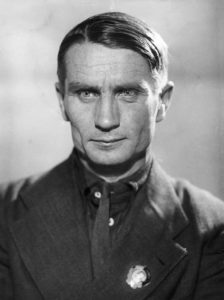
“Trust the experts,” they say. There is only one problem with this statement: Technocracy means negating the wisdom of the crowds and the distributed cognition that underlies the scientific method.
Wisdom of Crowds
The year was 1906, and Francis Galton, the father of statistics and the lesser-known cousin of Charles Darwin, was at a livestock fair. People could buy tickets for a guessing competition with an ox as a prize, and whoever had the most accurate guess of the ox’s weight would win it. Almost 800 people entered the competition, and Galton studied the entries.
What he found shocked him. The average guess was 1,198 pounds, only 0.1% higher than the correct weight of 1,197 pounds. The crowd had collectively made a better estimate than any individual participant. James Surowiecki called this phenomenon “the wisdom of crowds” in his New York Times bestseller by the same title.
If you’ve ever watched Who Wants to Be a Millionaire?, you’ll know that one of the surest ways to get the correct answer to a question is to ask the audience, and its collective response beats most individuals on most questions.
Distributed Cognition
Another place where you have encountered the wisdom of crowds is in the free market. How do all the producers know what and how much to produce so that there are no chronic shortages? Why do millions of ordinary people outperform even the best central planner in setting the correct prices through supply and demand?
The answer is distributed cognition. To accomplish this, one needs many independent people with different viewpoints, experiences, competencies, and a way to add or average their contributions. In this way, the free market utilizes the knowledge and intelligence of millions of people to outperform almost any expert.
At its best, science is a free market of ideas challenged by many different scientists. Through the distributed peer review process, the scientific community can arrive at our best understanding of the world.
Technocracy
Technocracy is the opposite of the wisdom of crowds. The centralization of power and knowledge in the hands of a tiny elite of unelected, unaccountable experts dictates the unquestioned truth to the rest of us. It is the Soviet-style central planning applied to knowledge.

Trofim Lysenko (Photo by: Sovfoto/Universal Images Group via Getty Images)
Shortly after Galton made his observations in the early 20th century, technocratic central planning gained traction in America and Europe through the rise of fascism, communism, and the New Deal.
It caused a dark chapter in human history. Millions of people had to die to satisfy the pet theories of the leading technocrats of their time, such as Trofim Lysenko, a Soviet biologist who caused the deaths of millions of Russians. Then, after the spectacular failure of his progressive biology, Chairman of the Chinese Communist Party Mao Zedong repeated his mistakes and caused the Great Chinese Famine that killed between 15 million and 55 million people. In America, many argue that Roosevelt’s central planning prolonged the Great Depression so that it lasted for more than a decade.
Modern Technocracy
With the rise of globalism, the technocratic ideas of Mussolini, Roosevelt, and Mao are once more gaining traction, and they are mainly used to target science. In climate science, top technocrats declare that “the debate is over.” In the COVID-19 pandemic, technocrats shut down open debate and the economy over an illness on which there was a diversity of opinion. “Trust the experts,” a tiny elite declared. According to the United Nations, the lockdowns hurled between 120 million and 180 million people into starvation.
Suppose the world had applied distributed cognition and tested dozens of diverse approaches instead of following the lead of a handful of politically appointed experts. In that case, history teaches us that far superior solutions could have been found earlier with far fewer victims of ideological fetish and incompetence.
Remember to check out the web’s best conservative news aggregator
Whatfinger.com — the #1 Alternative to the Drudge

